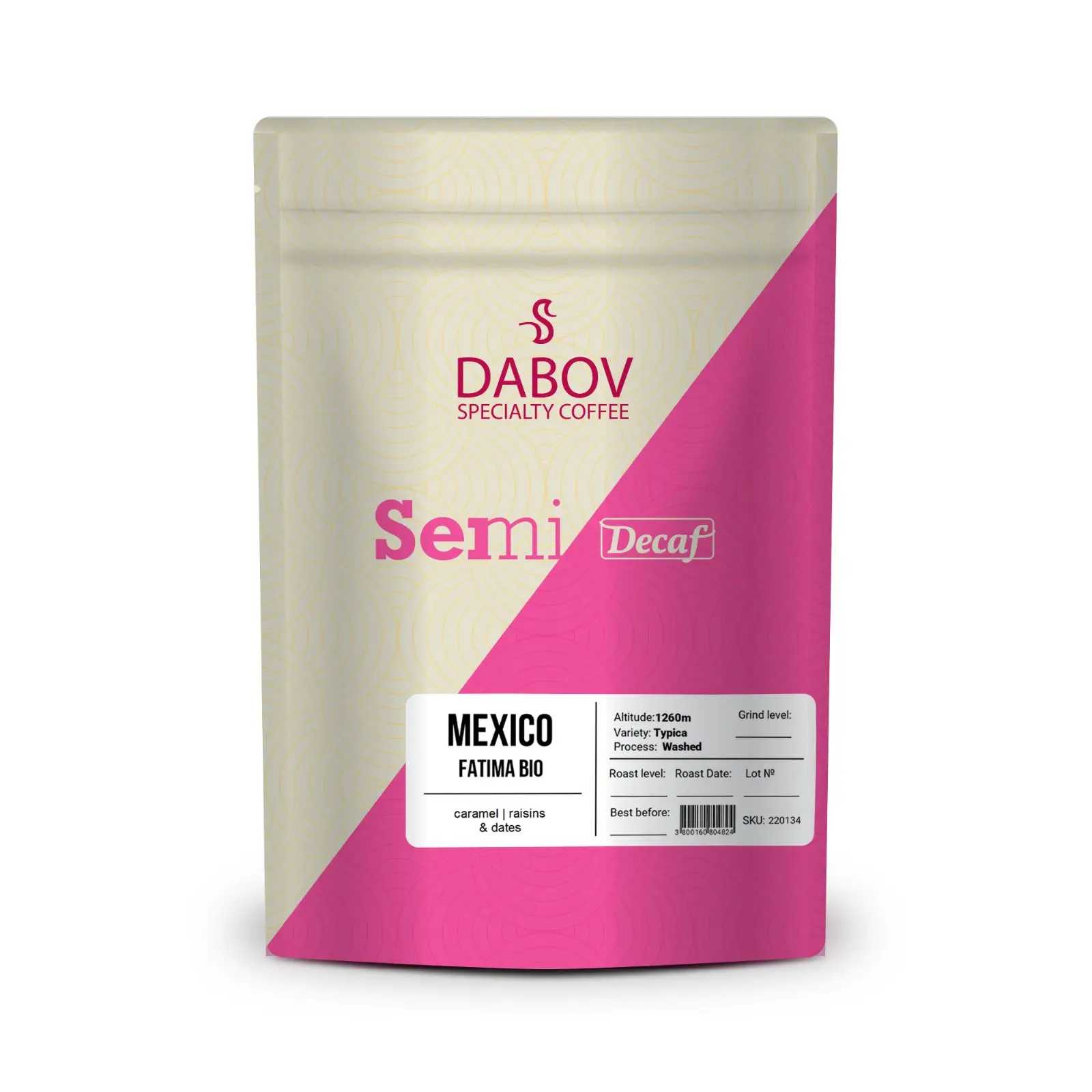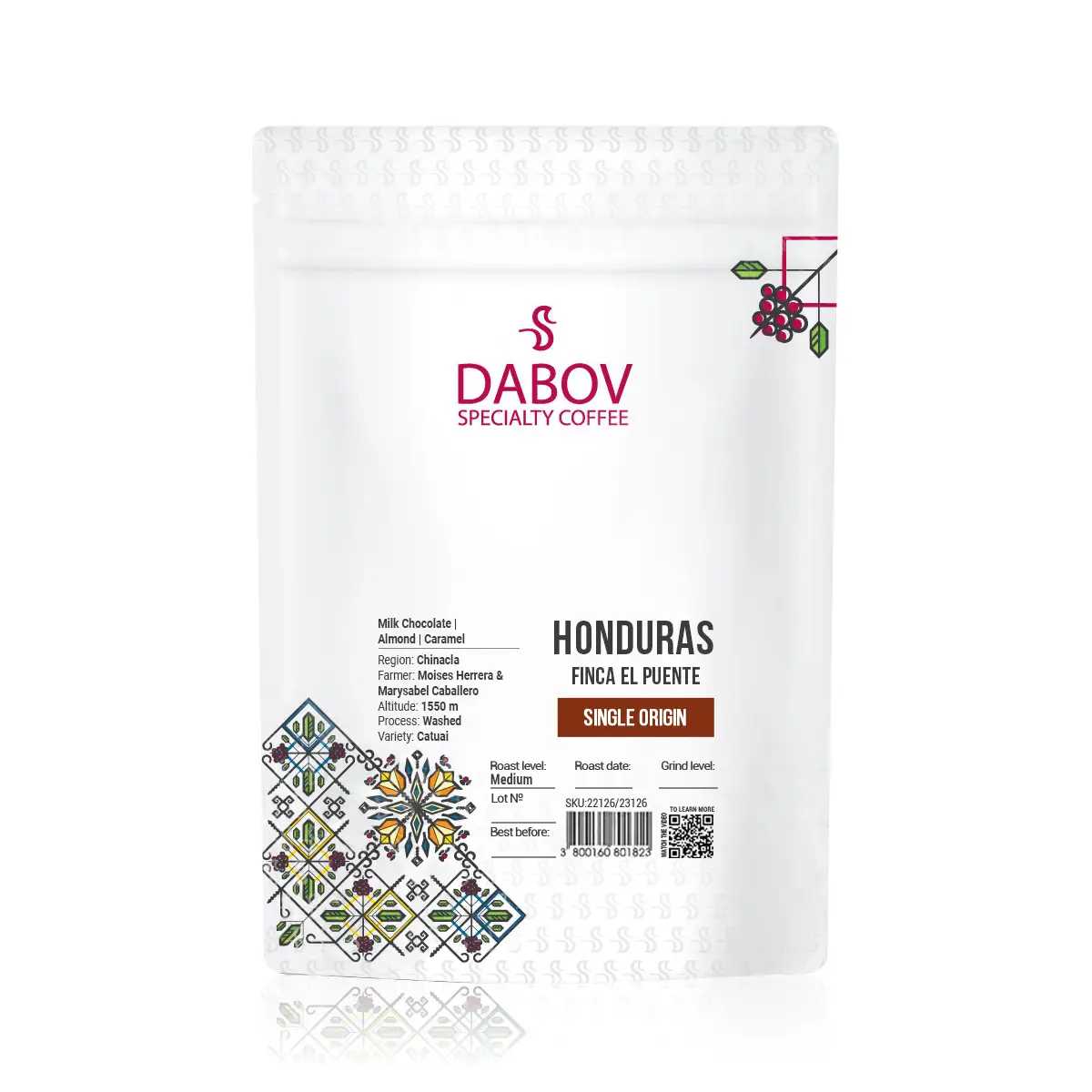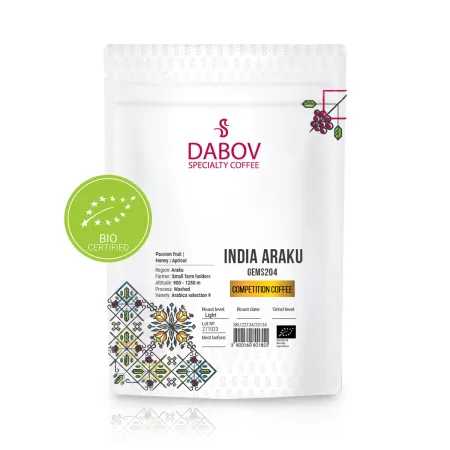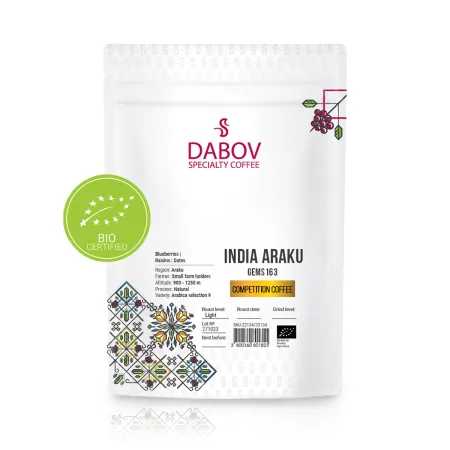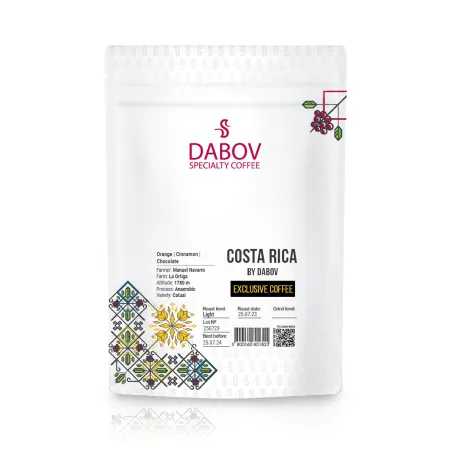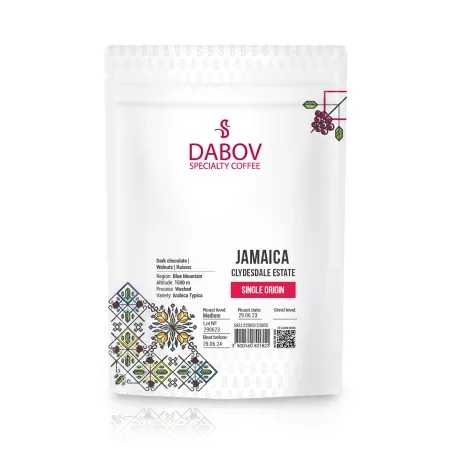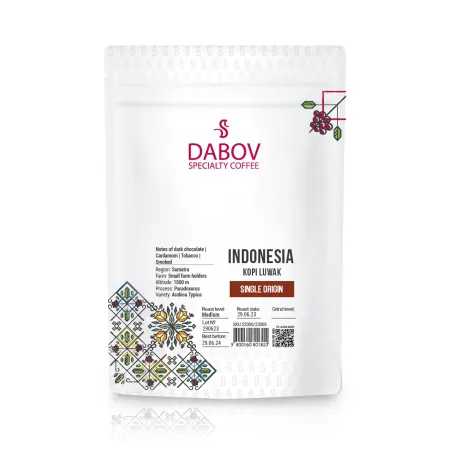Soil Composition Key Minerals for HighQuality Coffee
Unlock the secrets to high-quality coffee by understanding the vital role of soil composition. This article delves into how specific minerals affect the growth and flavor of coffee beans. Discover the essential nutrients that every coffee farmer should know, from nitrogen to trace minerals, and learn about the characteristics of ideal coffee soil. We also share practical farming tips to enhance soil health and boost your coffee output. Whether you're a seasoned farmer or a coffee enthusiast, understanding soil composition is key to producing the best coffee. Join us as we explore the intertwined nature of coffee quality and its soil.
Introduction
Coffee, a beloved beverage enjoyed by millions worldwide, is more than just a morning ritual—it's a complex agricultural product that demands precise cultivation conditions to achieve its full potential. At the heart of exceptional coffee production lies a critical factor often overlooked by casual consumers: soil composition. The intricate relationship between coffee plants and the earth they grow in is a fascinating subject that merits deep exploration, particularly for those invested in producing high-quality coffee beans.
Coffee farming is an art and science that spans continents, from the lush highlands of Ethiopia to the volcanic slopes of Hawaii. Regardless of location, one universal truth remains: the quality of coffee is inextricably linked to the health and composition of the soil in which it's grown. This article delves into the crucial role that soil composition plays in coffee cultivation, with a particular focus on the key minerals that contribute to producing superior coffee beans.
As we embark on this journey through the world of coffee soil composition, we'll uncover the essential nutrients that coffee plants crave, explore the ideal characteristics of high-quality coffee soil, and provide valuable insights for coffee farmers looking to enhance their soil management practices. By understanding the intricate dance between soil minerals and coffee quality, we can appreciate the complexity behind every perfectly brewed cup and the agricultural expertise required to produce it.
Understanding Coffee Soil Composition
1.1 Definition of Coffee Soil Composition
Coffee soil composition refers to the physical, chemical, and biological properties of the soil in which coffee plants are grown. This composition encompasses the proportions of various minerals, organic matter, air, and water within the soil structure. The importance of soil composition in coffee cultivation cannot be overstated—it serves as the foundation for plant growth, directly influencing the health of coffee trees, the yield of cherries, and ultimately, the quality and flavor profile of the beans produced.
The ideal coffee soil composition is a delicate balance of elements that provides essential nutrients, retains adequate moisture, allows for proper root development, and hosts beneficial microorganisms. This complex ecosystem beneath the surface plays a pivotal role in determining whether a coffee plantation will produce mediocre beans or those coveted by specialty roasters worldwide.
Understanding coffee soil composition is crucial for farmers and agronomists as it allows them to make informed decisions about soil management, fertilization, and overall cultivation practices. By optimizing soil conditions, coffee growers can significantly enhance the potential for producing high-quality beans that command premium prices in the global market.
1.2 Factors Influencing Soil Composition
The composition of coffee soil is not static; it's a dynamic system influenced by a myriad of factors, both natural and human-induced. Climate plays a significant role in shaping soil composition. In regions with high rainfall, such as parts of Colombia or Rwanda, soils tend to be more acidic due to the leaching of basic cations. Conversely, in drier climates like some coffee-growing areas of Brazil, soils may retain more minerals but require careful water management.
Altitude is another crucial factor affecting soil composition in coffee cultivation. High-altitude regions, prized for producing some of the world's finest coffees, often feature volcanic soils rich in organic matter and minerals. These soils typically have good drainage properties, which is essential for coffee root health. The cooler temperatures at higher elevations also slow down the decomposition of organic matter, leading to a gradual release of nutrients over time.
Geography and underlying geology significantly impact soil composition. For instance, the rich, red soils of the Kona coffee region in Hawaii are a result of weathered volcanic rock, providing a unique mineral profile that contributes to the distinct flavor of Kona coffee. Similarly, the limestone-rich soils of Jamaica's Blue Mountains impart characteristic qualities to the renowned Blue Mountain coffee.
Human activities, including historical land use, deforestation, and agricultural practices, also play a role in shaping soil composition. Years of intensive farming without proper soil management can lead to nutrient depletion, erosion, and a decline in soil organic matter. Conversely, sustainable farming practices can enhance soil health over time, improving its composition and structure.
Understanding these influencing factors is essential for coffee farmers and agronomists. It allows them to adapt their cultivation practices to the specific conditions of their region, implement appropriate soil conservation techniques, and make informed decisions about soil amendments and fertilization strategies. By working in harmony with these natural and anthropogenic factors, coffee growers can optimize their soil composition to produce the highest quality beans possible.
Key Minerals for High-Quality Coffee
2.1 Essential Nutrients in Coffee Soil
The production of high-quality coffee beans relies heavily on the presence and balance of essential nutrients in the soil. These nutrients can be broadly categorized into macronutrients and micronutrients, each playing a vital role in the growth, development, and overall health of coffee plants. Understanding these essential nutrients is crucial for coffee farmers aiming to optimize their soil composition for superior bean production.
Macronutrients, required in larger quantities, include nitrogen (N), phosphorus (P), and potassium (K), often referred to collectively as NPK. These primary nutrients form the backbone of plant nutrition and are critical for various physiological processes in coffee plants. Secondary macronutrients, such as calcium (Ca), magnesium (Mg), and sulfur (S), are also essential, albeit needed in slightly smaller amounts.
Micronutrients, while required in much smaller quantities, are no less important for coffee plant health and bean quality. These include iron (Fe), zinc (Zn), manganese (Mn), boron (B), copper (Cu), and molybdenum (Mo). Each of these trace minerals plays a specific role in plant metabolism and contributes to the overall quality of the coffee produced.
The availability of these nutrients in coffee soil is influenced by various factors, including soil pH, organic matter content, and the presence of beneficial soil microorganisms. A well-balanced soil composition ensures that coffee plants have access to all necessary nutrients throughout their growth cycle, from seedling to mature, fruit-bearing tree.
It's important to note that the ideal nutrient profile can vary depending on the coffee variety, local climate conditions, and specific soil characteristics. Therefore, regular soil testing and analysis are essential practices for coffee farmers to maintain optimal nutrient levels and address any deficiencies or imbalances promptly.
2.2 Role of Each Mineral in Coffee Growth
2.2.1 Nitrogen
Nitrogen plays a fundamental role in coffee plant growth and development. It is a key component of chlorophyll, the pigment responsible for photosynthesis, and is essential for the formation of amino acids, proteins, and nucleic acids. In coffee cultivation, nitrogen significantly influences vegetative growth, particularly leaf development and expansion.
Adequate nitrogen levels in coffee soil promote vigorous foliage growth, which is crucial for capturing sunlight and producing the energy needed for cherry development. However, the relationship between nitrogen and coffee quality is complex. While sufficient nitrogen is necessary for healthy plant growth, excessive levels can lead to overly vigorous vegetative growth at the expense of fruit production. This can result in a dilution of flavor compounds in the beans.
Nitrogen also affects the protein content of coffee beans, which in turn influences the development of flavor precursors during the roasting process. The right balance of nitrogen contributes to the production of beans with optimal levels of these precursor compounds, leading to a more complex and nuanced flavor profile in the cup.
Coffee farmers must carefully manage nitrogen levels throughout the growing season. This often involves strategic fertilization practices, such as split applications of nitrogen-rich fertilizers, to ensure that the plants receive adequate nutrition without promoting excessive vegetative growth. Organic sources of nitrogen, such as composted coffee pulp or leguminous cover crops, can provide a slow-release form of this essential nutrient while also improving overall soil health.
2.2.2 Phosphorus
Phosphorus is a critical mineral for coffee plants, playing a vital role in energy transfer, photosynthesis, and the formation of nucleic acids. In coffee cultivation, phosphorus is particularly important for root development and flowering, two crucial aspects of producing high-quality beans.
Strong, well-developed root systems are essential for coffee plants to access water and nutrients efficiently. Phosphorus promotes root growth and development, enabling coffee trees to establish deep, extensive root networks. This is especially important in regions with variable rainfall or prone to drought, as a robust root system helps plants withstand periods of water stress.
During the flowering stage, phosphorus is crucial for the formation and development of coffee blossoms. Adequate phosphorus levels in the soil contribute to increased flower set and improved fruit retention, ultimately leading to higher yields of quality cherries. The mineral also plays a role in the transfer of genetic information, influencing the characteristics of the coffee beans produced.
Phosphorus availability in coffee soil is often influenced by soil pH. In acidic soils, common in many coffee-growing regions, phosphorus can become bound to aluminum and iron compounds, making it less available to plants. Coffee farmers may need to address soil acidity and consider using phosphorus fertilizers that are more readily available in acidic conditions to ensure optimal uptake by coffee plants.
The timing of phosphorus application is also critical. Many coffee farmers apply phosphorus-rich fertilizers before the onset of the flowering season to support blossom development and fruit set. This strategic application helps ensure that coffee plants have access to this essential nutrient during crucial developmental stages, contributing to the production of high-quality beans.
2.2.3 Potassium
Potassium is often referred to as the "quality nutrient" in coffee cultivation due to its significant impact on bean development and overall coffee quality. This essential mineral plays a multifaceted role in coffee plant physiology, influencing water retention, disease resistance, and the translocation of sugars and starches.
One of potassium's primary functions in coffee plants is regulating water uptake and retention. It helps control the opening and closing of stomata, the tiny pores on leaf surfaces through which plants exchange gases and water vapor with the atmosphere. Proper potassium levels enable coffee plants to use water more efficiently, making them more resilient to drought stress and fluctuations in soil moisture.
Potassium also enhances the coffee plant's natural defense mechanisms against diseases and pests. Adequate potassium levels strengthen cell walls, making it more difficult for pathogens to penetrate and infect plant tissues. This increased resistance to diseases is crucial for maintaining healthy coffee trees and ensuring consistent yields of high-quality beans.
In terms of coffee bean development, potassium plays a vital role in the translocation of sugars and starches from leaves to developing cherries. This process is essential for the formation of flavor precursors in the beans, which contribute to the complex taste profile of high-quality coffee. Sufficient potassium levels during fruit development can lead to beans with higher sugar content and improved overall flavor characteristics.
Coffee farmers must carefully manage potassium levels throughout the growing cycle. Soil testing is crucial to determine potassium availability, as excessive levels can interfere with the uptake of other essential nutrients like calcium and magnesium. Balanced fertilization practices, often involving the use of potassium sulfate or organic sources like wood ash, help maintain optimal potassium levels for high-quality coffee production.
2.2.4 Calcium and Magnesium
Calcium and magnesium are secondary macronutrients that play crucial roles in coffee plant health and bean development. While required in smaller quantities than the primary macronutrients (NPK), their importance in producing high-quality coffee should not be underestimated.
Calcium is essential for cell wall development in coffee plants. Strong cell walls contribute to the overall structural integrity of the plant, from roots to leaves to cherries. In coffee cultivation, adequate calcium levels help prevent physiological disorders such as cherry splitting, which can significantly impact bean quality. Calcium also plays a role in root growth, particularly in the development of root tips, enabling coffee plants to explore the soil more effectively for water and nutrients.
Magnesium is a central component of chlorophyll molecules, making it indispensable for photosynthesis. Sufficient magnesium levels ensure efficient energy production in coffee plants, supporting overall growth and development. Magnesium also acts as a cofactor in many enzymatic reactions and is involved in the synthesis of proteins and nucleic acids.
Both calcium and magnesium contribute to the coffee plant's ability to withstand environmental stresses. Calcium helps regulate the plant's response to various stimuli, including temperature fluctuations and physical damage. Magnesium enhances the plant's tolerance to high light intensity, which is particularly important for coffee grown at higher altitudes where solar radiation can be intense.
In terms of coffee quality, the balance between calcium and magnesium in the soil can influence the flavor profile of the beans. Some studies suggest that higher calcium-to-magnesium ratios may contribute to improved cup quality, though this relationship is complex and can vary depending on other soil factors and coffee varieties.
Coffee farmers often need to pay special attention to calcium and magnesium levels, particularly in acidic soils where these nutrients can be easily leached. Liming practices, using materials such as dolomitic limestone, can help address soil acidity while simultaneously providing both calcium and magnesium. However, care must be taken to maintain the proper balance, as excessive liming can lead to micronutrient deficiencies.
2.2.5 Trace Minerals
While required in much smaller quantities than macronutrients, trace minerals or micronutrients play vital roles in coffee plant metabolism and contribute significantly to the overall quality of coffee beans. The most important trace minerals for coffee cultivation include iron, zinc, manganese, boron, copper, and molybdenum.
Iron is crucial for chlorophyll synthesis and is involved in various enzymatic reactions within the coffee plant. Adequate iron levels ensure efficient photosynthesis and contribute to the overall vigor of the plant. Iron deficiency can lead to chlorosis, a condition where leaves lose their green color, reducing the plant's ability to produce energy and develop healthy cherries.
Zinc plays a role in the production of growth hormones and the formation of chlorophyll. In coffee plants, zinc is particularly important for flower development and fruit set. Sufficient zinc levels can contribute to more uniform cherry ripening, which is crucial for producing high-quality coffee beans.
Manganese is involved in photosynthesis, nitrogen metabolism, and the activation of various enzymes. It also contributes to the coffee plant's resistance to root pathogens. Adequate manganese levels support overall plant health and can influence the flavor profile of the resulting coffee.
Boron is essential for cell wall formation, flower development, and fruit set in coffee plants. It also plays a role in the transport of sugars within the plant. Proper boron levels can lead to improved cherry development and potentially enhance the sweetness of the coffee beans.
Copper is involved in photosynthesis and the formation of lignin, which contributes to the strength of cell walls. It also plays a role in the coffee plant's disease resistance mechanisms. Adequate copper levels can help coffee plants withstand various environmental stresses.
Molybdenum, while required in very small amounts, is crucial for nitrogen metabolism in coffee plants. It helps in the conversion of nitrate to amino acids, supporting overall plant growth and development.
The availability of these trace minerals in coffee soil is often influenced by soil pH and organic matter content. In many coffee-growing regions, particularly those with acidic soils, micronutrient deficiencies can occur. Coffee farmers must carefully monitor these trace minerals through regular soil and leaf tissue analysis, addressing any deficiencies through targeted fertilization or soil amendment practices.
Balancing these micronutrients is a delicate process, as excesses can be just as detrimental as deficiencies. For instance, excessive levels of one micronutrient can interfere with the uptake of others. Therefore, a holistic approach to soil management, considering the interplay between all nutrients, is essential for producing high-quality coffee beans.
Characteristics of High-Quality Coffee Soil
3.1 Ideal Soil pH Levels
The pH level of coffee soil is a critical factor that significantly influences nutrient availability and, consequently, the health and productivity of coffee plants. pH is a measure of soil acidity or alkalinity, with a scale ranging from 0 to 14, where 7 is neutral, below 7 is acidic, and above 7 is alkaline. For coffee cultivation, the ideal soil pH range is typically between 6.0 and 6.5, slightly acidic to neutral.
This optimal pH range is crucial because it affects the solubility and availability of various nutrients in the soil. At the ideal pH level, most essential nutrients are readily available for uptake by coffee plant roots. When soil pH deviates from this range, certain nutrients become less accessible, while others may become overly abundant, potentially leading to toxicity issues.
In soils that are too acidic (pH below 6.0), which is common in many tropical coffee-growing regions, several problems can arise. Aluminum toxicity becomes a significant concern, as aluminum becomes more soluble in acidic conditions and can inhibit root growth. Additionally, the availability of essential nutrients like phosphorus, calcium, and magnesium decreases in highly acidic soils, potentially leading to deficiencies that can impact coffee plant health and bean quality.
Conversely, in soils that are too alkaline (pH above 7.0), which is less common in traditional coffee-growing areas but can occur in some regions, the availability of micronutrients such as iron, manganese, and zinc can be severely limited. This can result in chlorosis and other nutrient deficiency symptoms, affecting overall plant health and coffee quality.
Managing soil pH is an ongoing process for coffee farmers. Regular soil testing is essential to monitor pH levels and make necessary adjustments. In cases where soil is too acidic, liming materials such as agricultural lime or dolomite can be applied to raise the pH. The amount and frequency of lime application depend on various factors, including the initial soil pH, soil texture, and the buffering capacity of the soil.
It's important to note that different coffee varieties may have slightly different pH preferences. For instance, some studies suggest that Robusta coffee (Coffea canephora) may tolerate more acidic conditions compared to Arabica coffee (Coffea arabica). Therefore, coffee farmers should consider their specific varieties when managing soil pH.
Maintaining the ideal soil pH is not just about creating optimal conditions for nutrient uptake; it also influences soil microbial activity. The beneficial microorganisms that contribute to nutrient cycling and organic matter decomposition thrive within specific pH ranges. By maintaining the appropriate pH level, coffee farmers can foster a healthy soil ecosystem that supports long-term soil fertility and sustainability.
3.2 Soil Texture and Structure
Soil texture and structure are fundamental characteristics that play a crucial role in determining the suitability of soil for high-quality coffee production. These physical properties influence water retention, drainage, aeration, and root development, all of which are essential for healthy coffee plant growth and optimal bean development.
Soil texture refers to the relative proportions of sand, silt, and clay particles in the soil. The ideal soil texture for coffee cultivation is generally considered to be a loam or sandy loam. This balanced mixture provides good water retention capabilities while allowing for adequate drainage and aeration. A loamy soil texture typically contains about 40% sand, 40% silt, and 20% clay, though slight variations can still produce excellent results for coffee growing.
Sandy soils, while providing excellent drainage, may not retain water and nutrients as effectively, potentially leading to stress during dry periods and requiring more frequent irrigation and fertilization. On the other hand, clay-rich soils can retain water and nutrients well but may suffer from poor drainage and aeration, potentially leading to root health issues in coffee plants.
Soil structure refers to the arrangement of soil particles into aggregates or clumps. A well-structured soil has a crumbly texture with a mix of different-sized aggregates, allowing for the presence of both large and small pores. This structure is crucial for coffee cultivation as it facilitates:
- Water infiltration and retention: Allowing rainwater or irrigation to penetrate the soil easily while retaining enough moisture for plant use.
- Proper drainage: Preventing waterlogging, which can lead to root rot and other fungal diseases in coffee plants.
- Adequate aeration: Ensuring oxygen is available for root respiration and the activity of beneficial soil microorganisms.
- Root penetration: Enabling coffee plant roots to explore the soil profile extensively, accessing water and nutrients more effectively.
The development and maintenance of good soil structure are influenced by various factors, including organic matter content, biological activity, and soil management practices. Coffee farmers can enhance soil structure through several methods:
- Incorporating organic matter: Adding compost, mulch, or cover crops increases soil organic matter, which acts as a binding agent for soil particles, improving structure.
- Minimizing soil disturbance: Reducing tillage helps preserve soil structure and protects beneficial soil organisms that contribute to aggregate formation.
- Implementing cover crops: These protect the soil surface, add organic matter, and improve structure through their root systems.
- Managing traffic: Avoiding heavy machinery on wet soils prevents compaction, which can destroy soil structure.
In coffee plantations, maintaining good soil texture and structure is an ongoing process. As coffee trees are perennial crops, often cultivated on the same land for decades, long-term soil management strategies are crucial. This includes regular soil testing to monitor physical properties, implementing erosion control measures on sloped terrain, and adjusting cultivation practices to preserve and enhance soil structure over time.
By focusing on creating and maintaining optimal soil texture and structure, coffee farmers can provide their plants with the physical environment necessary for producing high-quality beans. This attention to soil physical properties contributes significantly to the overall health of the coffee ecosystem, supporting not just the current crop but ensuring sustainable production for years to come.
3.3 Organic Matter and Humus
Organic matter and humus are vital components of high-quality coffee soil, playing a crucial role in soil fertility, structure, and overall ecosystem health. These elements contribute significantly to the production of superior coffee beans by enhancing the soil's physical, chemical, and biological properties.
Organic matter refers to the decomposed and partially decomposed plant and animal materials in the soil. In coffee plantations, this includes fallen leaves, pruned branches, coffee cherry pulp, and other organic residues. As these materials break down, they release nutrients, improve soil structure, and support a diverse community of soil microorganisms.
Humus is the end product of organic matter decomposition, a dark, complex substance that is relatively stable in the soil. It plays a crucial role in coffee soil health by:
- Enhancing nutrient retention: Humus has a high cation exchange capacity, allowing it to hold onto essential nutrients and prevent them from leaching out of the root zone.
- Improving water retention: Humus can hold up to 20 times its weight in water, helping to maintain soil moisture levels during dry periods.
- Buffering soil pH: The presence of humus helps stabilize soil pH, reducing rapid fluctuations that could stress coffee plants.
- Supporting microbial activity: Humus provides a food source and habitat for beneficial soil microorganisms, which are crucial for nutrient cycling and plant health.
- Enhancing soil structure: Humus acts as a binding agent for soil particles, contributing to the formation of stable soil aggregates.
For coffee farmers, maintaining and increasing soil organic matter and humus levels is a key strategy for improving soil quality and, consequently, coffee bean quality. Several practices can be implemented to achieve this:
- Mulching: Applying organic mulches, such as coffee pulp, leaf litter, or pruned branches, helps add organic matter to the soil surface.
- Composting: Creating and applying compost from farm waste materials provides a rich source of organic matter and beneficial microorganisms.
- Cover cropping: Planting cover crops between coffee rows or during fallow periods adds organic matter through root systems and above-ground biomass.
- Minimizing tillage: Reducing soil disturbance helps preserve existing organic matter and promotes the accumulation of humus.
- Agroforestry practices: Incorporating shade trees in coffee plantations contributes to organic matter through leaf litter and root decomposition.
The benefits of high organic matter and humus content in coffee soils extend beyond immediate plant nutrition. These components contribute to long-term soil health and sustainability, which is particularly important in perennial cropping systems like coffee. Soils rich in organic matter and humus are more resilient to environmental stresses, such as drought or heavy rainfall events, helping to stabilize coffee production in the face of climate variability.
Moreover, organic matter-rich soils can contribute to the unique flavor profiles of coffee beans. The complex interactions between organic compounds in the soil and coffee plant roots may influence the development of flavor precursors in the beans, potentially enhancing the complexity and distinctiveness of the coffee's taste.
Coffee farmers aiming for high-quality production should view organic matter and humus management as a long-term investment in their soil's health. Regular soil testing to monitor organic matter levels, combined with consistent application of organic inputs, can help maintain and improve this crucial aspect of coffee soil composition over time.
Coffee Farming Tips for Enhancing Soil Composition
4.1 Soil Testing and Analysis
Regular soil testing and analysis are fundamental practices for coffee farmers aiming to produce high-quality beans. These procedures provide crucial insights into the soil's chemical, physical, and biological properties, enabling farmers to make informed decisions about soil management and fertilization strategies.
The importance of soil testing in coffee cultivation cannot be overstated. It allows farmers to:
- Determine nutrient levels and imbalances
- Assess soil pH and acidity
- Evaluate organic matter content
- Identify potential toxicities or deficiencies
- Monitor changes in soil composition over time
A comprehensive soil testing program for coffee farms typically involves the following steps:
- Sampling: Collect soil samples from representative areas of the coffee plantation. This usually involves taking multiple subsamples from different locations within each field and mixing them to create a composite sample. The depth of sampling is crucial, typically ranging from 0-20 cm for surface samples and 20-40 cm for subsoil samples.
- Laboratory Analysis: Send the samples to a reputable soil testing laboratory. The analysis should include:
- Macronutrients (N, P, K, Ca, Mg, S)
- Micronutrients (Fe, Zn, Mn, B, Cu, Mo)
- Soil pH and buffer pH
- Organic matter content
- Cation Exchange Capacity (CEC)
- Base saturation percentages
- Interpretation: Work with agronomists or soil specialists to interpret the results. This step is crucial as it involves considering the specific needs of coffee plants, local climate conditions, and the farm's production goals.
- Recommendations: Based on the interpretation, develop a tailored soil management plan. This may include recommendations for:
- Liming to adjust soil pH
- Specific fertilizer formulations and application rates
- Organic matter management strategies
- Micronutrient applications
- Implementation: Apply the recommended treatments and management practices.
- Monitoring: Conduct follow-up tests to assess the effectiveness of the implemented strategies and make adjustments as needed.
For coffee farmers, the frequency of soil testing is an important consideration. While annual testing is ideal, especially in intensively managed systems, testing every 2-3 years can still provide valuable information for long-term soil management. More frequent testing may be necessary when implementing significant changes in soil management practices or when addressing specific soil issues.
In addition to standard soil tests, coffee farmers may benefit from more specialized analyses:
- Soil biological assessments: These can provide insights into microbial activity and diversity, which are crucial for nutrient cycling and overall soil health.
- Leaf tissue analysis: Complementing soil tests with leaf tissue analysis can offer a more complete picture of the plant's nutritional status and help fine-tune fertilization programs.
- Soil physical property tests: Assessments of soil texture, structure, and water-holding capacity can inform irrigation and soil conservation strategies.
Implementing a robust soil testing and analysis program requires an initial investment of time and resources. However, the long-term benefits in terms of improved coffee quality, increased yields, and more efficient use of inputs make it an essential practice for serious coffee producers. By basing soil management decisions on solid scientific data, coffee farmers can optimize their soil composition, leading to healthier plants and higher quality beans.
4.2 Fertilization Strategies
Developing effective fertilization strategies is crucial for coffee farmers aiming to enhance soil composition and produce high-quality beans. A well-planned fertilization program addresses the specific nutritional needs of coffee plants while considering the existing soil conditions, environmental factors, and sustainability goals.
Key principles for developing fertilization strategies in coffee cultivation include:
- Balanced Nutrition: Ensure that all essential nutrients are provided in the right proportions. While NPK (Nitrogen, Phosphorus, and Potassium) are often the focus, secondary nutrients and micronutrients should not be neglected.
- Timing: Align fertilizer applications with the coffee plant's growth stages and physiological demands. For instance, nitrogen applications are often split, with a portion applied before the rainy season to support vegetative growth and another portion during fruit development.
- Placement: Consider the most effective method of fertilizer placement. Options include broadcast application, banding around the drip line of the coffee trees, or incorporation into the soil.
- Source Selection: Choose appropriate fertilizer sources based on soil conditions, plant needs, and environmental considerations. This may involve a combination of synthetic and organic fertilizers.
- Soil pH Management: Implement liming practices as needed to maintain optimal soil pH for nutrient availability.
- Organic Matter Integration: Incorporate organic fertilizers and amendments to improve soil structure and support microbial activity.
Fertilization strategies for high-quality coffee production often involve a combination of the following approaches:
- Synthetic Fertilizers:
- Provide readily available nutrients for immediate plant uptake.
- Allow for precise control of nutrient ratios.
- Examples include ammonium sulfate for nitrogen, superphosphate for phosphorus, and potassium chloride for potassium.
- Controlled-release fertilizers can provide a steady nutrient supply over time.
- Organic Fertilizers:
- Improve soil structure and support beneficial microorganisms.
- Release nutrients slowly, reducing the risk of leaching.
- Examples include compost, animal manures, and coffee pulp.
- Green manures and cover crops can be used as in-situ organic fertilizers.
- Foliar Fertilization:
- Useful for addressing micronutrient deficiencies quickly.
- Can supplement soil-applied fertilizers during critical growth stages.
- Particularly effective for elements like boron and zinc.
- Fertigation:
- Combining fertilization with irrigation systems for precise nutrient delivery.
- Allows for frequent, small applications that match plant uptake patterns.
- Particularly useful in drought-prone areas or with high-density plantings.
- Biofertilizers:
- Incorporate beneficial microorganisms to enhance nutrient availability and uptake.
- Examples include mycorrhizal fungi and nitrogen-fixing bacteria.
Implementing these strategies effectively requires careful planning and monitoring:
- Soil Testing: Base fertilization plans on regular soil analysis results to address specific deficiencies and avoid over-application.
- Leaf Tissue Analysis: Use periodic leaf tests to fine-tune nutrient management and identify hidden deficiencies.
- Record Keeping: Maintain detailed records of fertilizer applications, yields, and quality metrics to assess the effectiveness of the fertilization program over time.
- Adaptive Management: Be prepared to adjust fertilization strategies based on plant response, changing environmental conditions, and evolving soil health.
- Environmental Considerations: Implement best practices to minimize nutrient runoff and leaching, protecting local water resources.
- Economic Analysis: Balance the costs of fertilization with expected yield and quality improvements to ensure profitability.
For organic coffee production, special attention must be given to building soil fertility through natural means:
- Composting: Develop on-farm composting systems to recycle organic waste into valuable fertilizer.
- Cover Cropping: Implement a diverse rotation of cover crops to add organic matter and fix atmospheric nitrogen.
- Agroforestry: Integrate nitrogen-fixing shade trees to provide natural fertilization and improve soil structure.
- Biochar: Consider incorporating biochar to enhance soil water and nutrient retention capacities.
By implementing a comprehensive and tailored fertilization strategy, coffee farmers can significantly enhance their soil composition, leading to improved plant health, higher yields, and superior bean quality. This approach not only benefits the current crop but also contributes to the long-term sustainability of the coffee plantation, ensuring productive and high-quality harvests for years to come.
4.3 Crop Rotation and Cover Crops
While coffee is a perennial crop that typically occupies the same land for many years, the principles of crop rotation and the use of cover crops can still be applied effectively in coffee farming systems to enhance soil composition and overall farm health. These practices play a crucial role in maintaining soil fertility, preventing erosion, and managing pests and diseases.
Crop Rotation in Coffee Systems:Traditional crop rotation, where different crops are grown in succession on the same land, is not typically practiced in established coffee plantations. However, the concept can be applied in several ways:
- Nursery Rotation: Rotate the location of coffee seedling nurseries to prevent the buildup of soil-borne pathogens.
- Replanting Strategies: When renovating old coffee plots, consider planting a different crop for a season or two before replanting coffee. This can help break pest and disease cycles and improve soil health.
- Intercropping: Implement a rotating system of intercrops between coffee rows, changing the intercrop species periodically to diversify soil inputs and disrupt pest cycles.
- Fallow Periods: In areas where coffee is removed, implement a fallow period with specific cover crops before replanting coffee.
Cover Crops in Coffee Production:Cover crops are an invaluable tool for coffee farmers looking to improve soil composition. They can be planted between coffee rows, during renovation periods, or in fallow areas. The benefits of cover crops in coffee systems include:
- Soil Protection: Cover crops prevent erosion by shielding the soil from rain impact and wind.
- Organic Matter Addition: When incorporated into the soil, cover crops increase organic matter content, improving soil structure and water-holding capacity.
- Nitrogen Fixation: Leguminous cover crops, such as clover or vetch, can fix atmospheric nitrogen, reducing the need for synthetic fertilizers.
- Weed Suppression: Dense cover crop growth can suppress weed development, reducing herbicide use.
- Biodiversity Enhancement: Cover crops provide habitat for beneficial insects and microorganisms, promoting a healthier farm ecosystem.
- Nutrient Cycling: Deep-rooted cover crops can bring nutrients from lower soil layers to the surface, making them available to coffee plants.
Implementing Cover Crops in Coffee Farms:To effectively use cover crops in coffee production, consider the following strategies:
- Species Selection: Choose cover crop species that are well-adapted to local conditions and complement coffee production. Options might include:
- Legumes: Clover, vetch, or pigeon peas for nitrogen fixation
- Grasses: Oats or rye for rapid soil coverage and organic matter addition
- Brassicas: Radishes or mustard for bio-fumigation and deep soil penetration
- Timing: Plan cover crop planting to coincide with coffee's less active growth periods or during renovation phases.
- Management: Develop a plan for terminating or incorporating the cover crop to maximize benefits without competing with coffee plants.
- Mulching: Use cover crop residues as mulch around coffee trees to conserve moisture and suppress weeds.
- Intercropping: In young coffee plantations, consider planting cover crops between rows, gradually phasing them out as the coffee canopy closes.
- Alley Cropping: In mature plantations, maintain permanent alleys of cover crops between wider-



